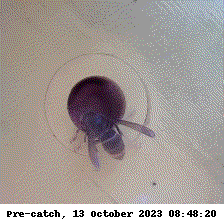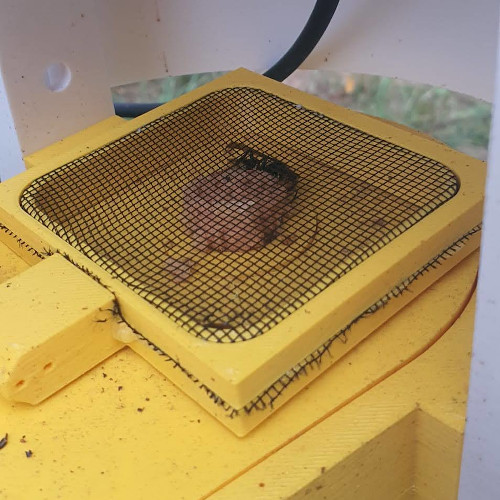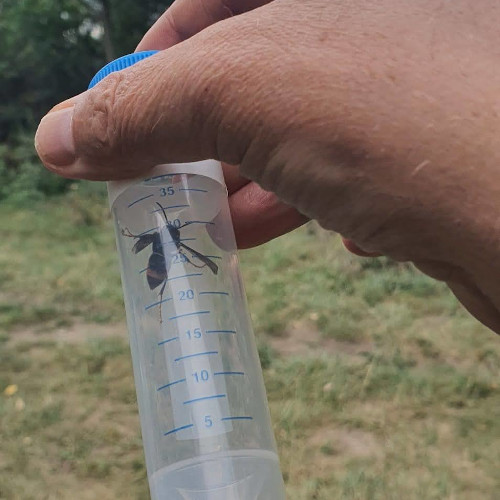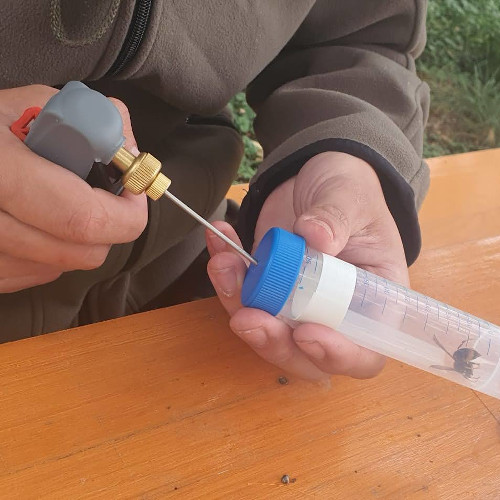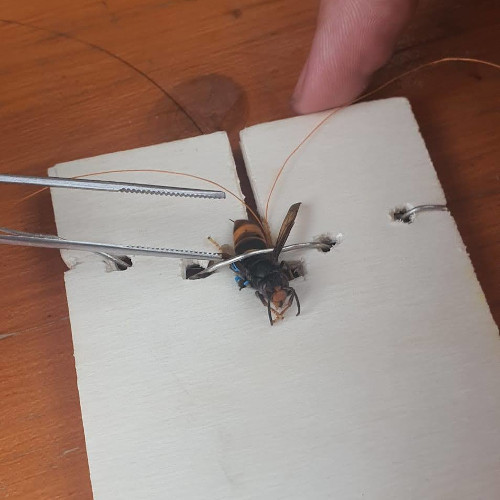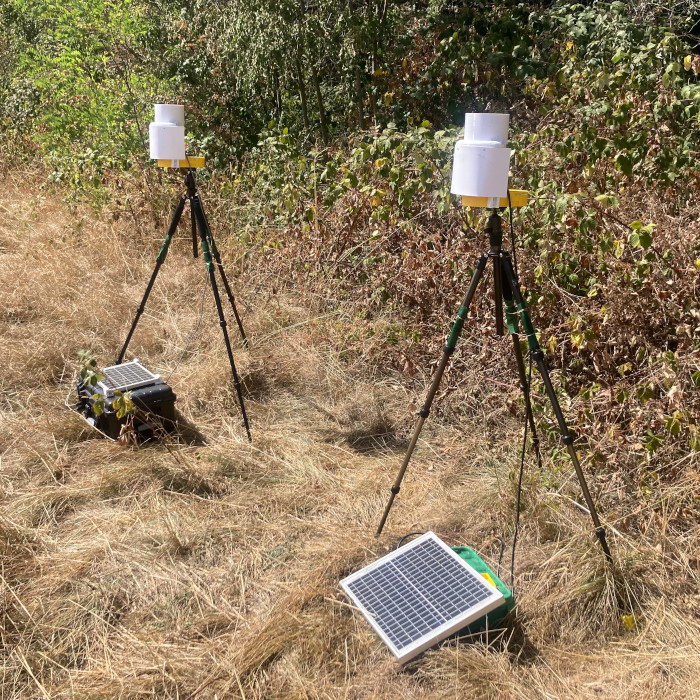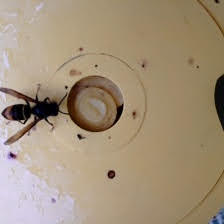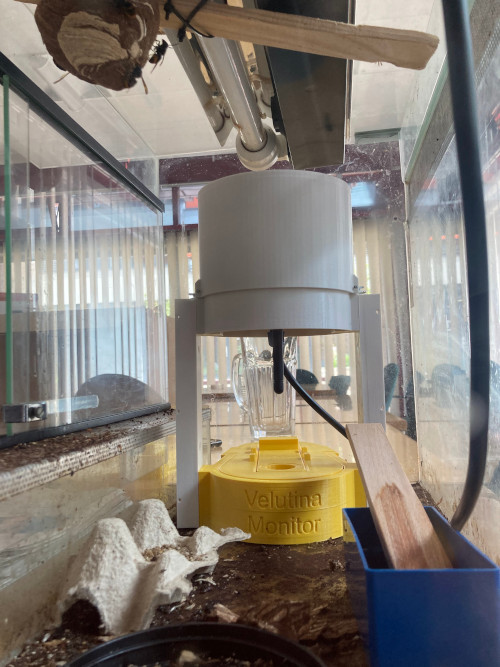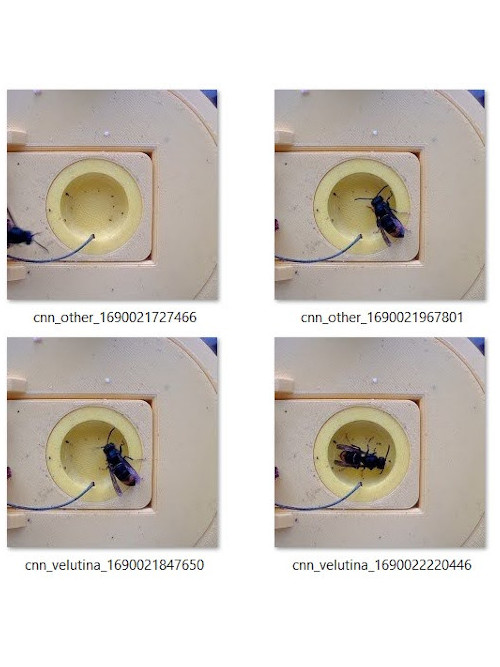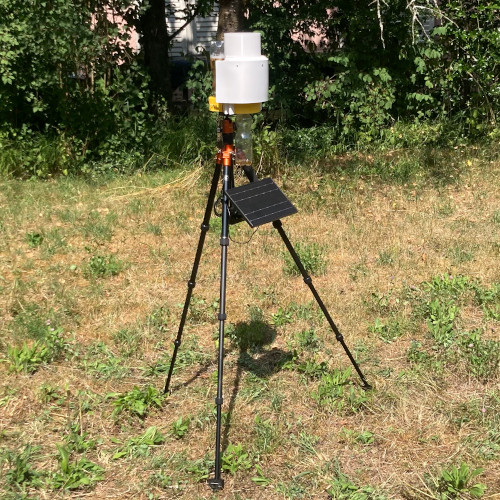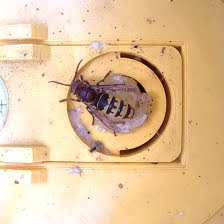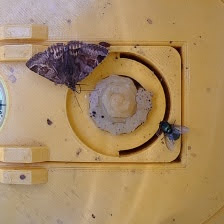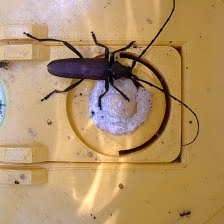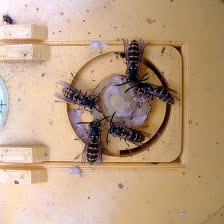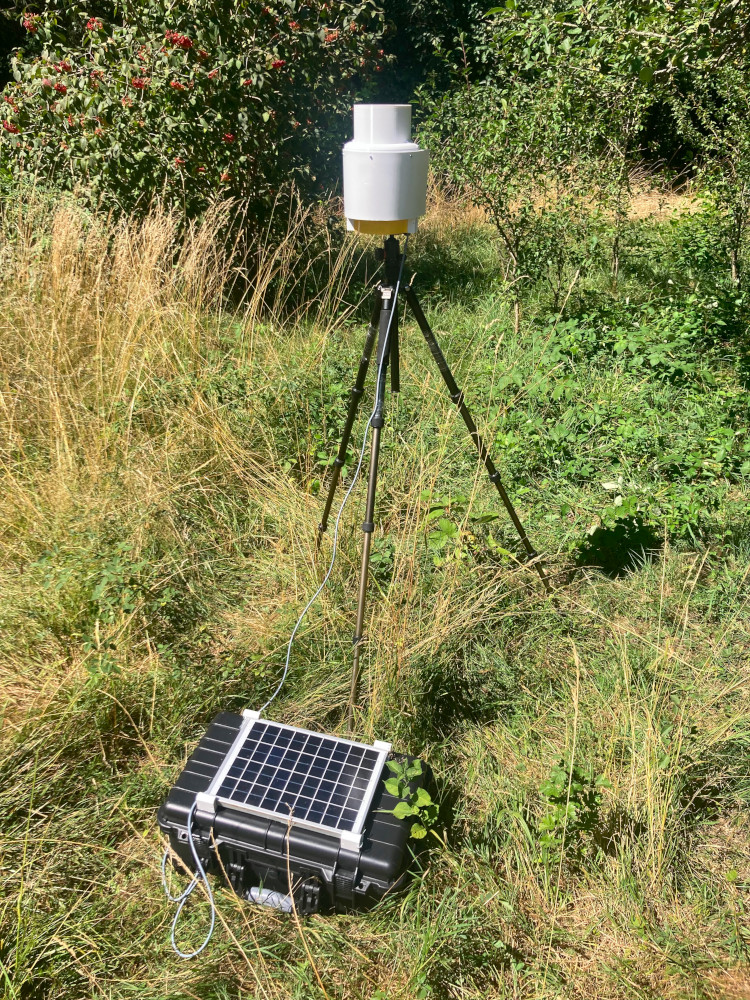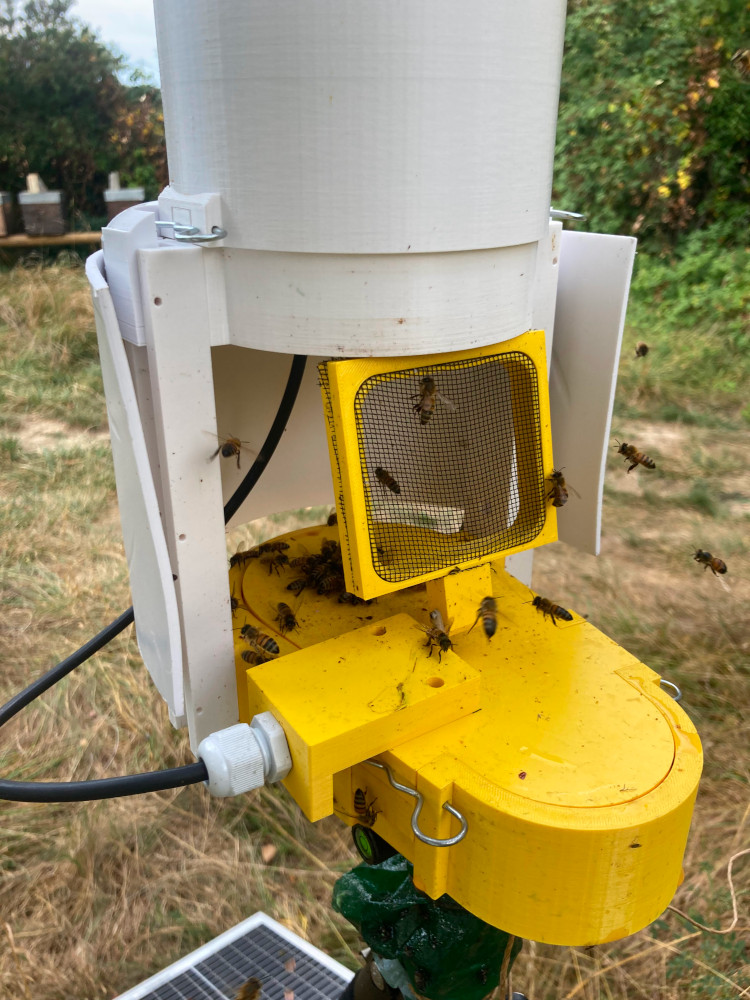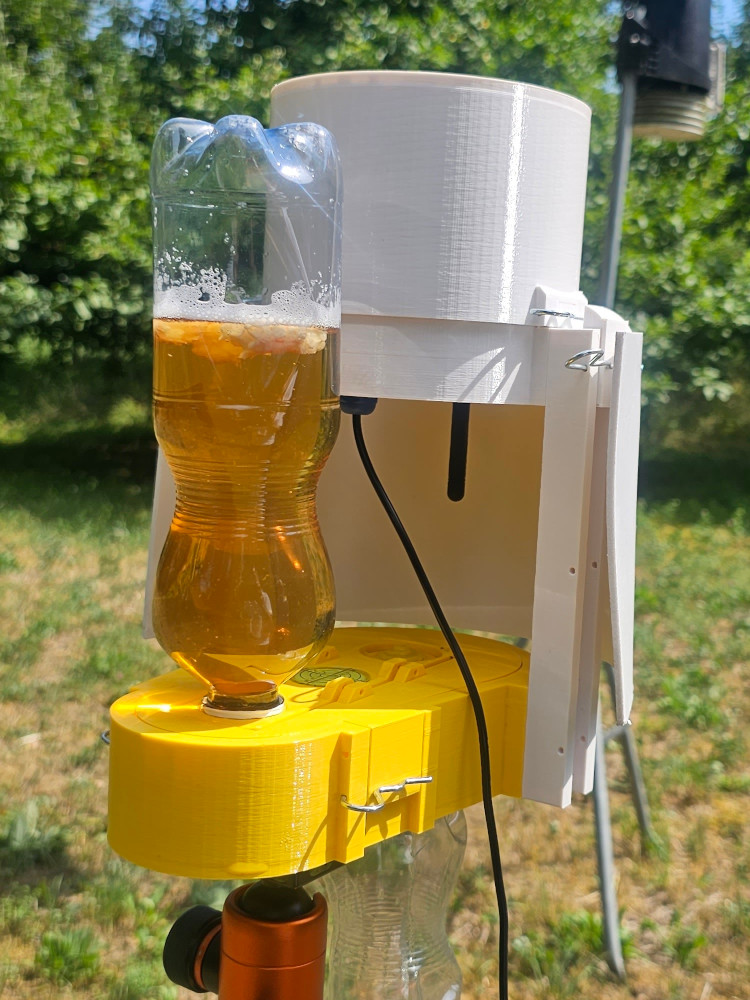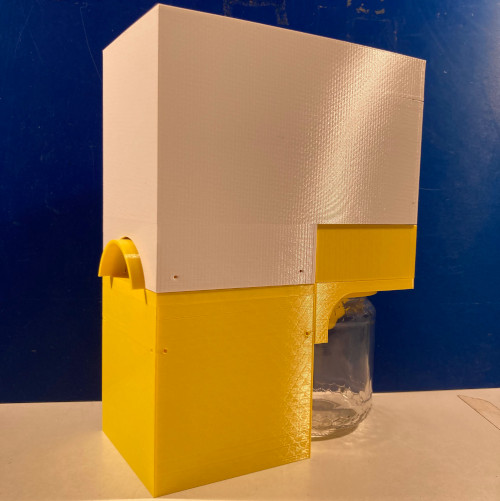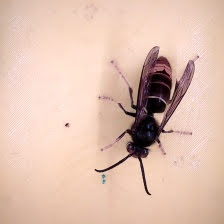Blog
10/12/2023
Trap shown on Il giardino di Albert
Trap shown in the episode on biological invasions of the television broadcast 'Il Giardino di Albert' by the Swiss Italian Television (RSI).
13/10/2023
200 Catches in 12 days
After a full month with only a few visits from crabros, the bait was replaced with one that had a higher sugar content. Following this change, both velutinas and crabros began visiting the trap again. The classification network was able to correctly identify 90% of the visits and successfully catch the visiting velutinas by actuating the net.
01/10/2023
Trap shown on RTS
Thanks to the collaboration with Gottlieb Dandliker, it was possible to present the velutina trap during the "Mise au Point" transmission on Swiss French Television RTS. The episode focused on the arrival of velutina in Switzerland and showcased various techniques used to combat it.
25/08/2023
First catch of a velutina in Satigny
At 09:30, the trap triggered for the first time to catch a Velutina. The post-catch images confirmed the successful catch, and the Velutina stayed in the trap until 17:00 when an attempt was made by Gottlieb Dandliker to use it for telemetry. Unfortunately, the Velutina was too weak or too small and couldn't take off with the tracker, and another Velutina was used to track the nest. Telemetry pictures taken by Gottlieb Dandliker.
21/08/2023
Bait comparison at Bioparc Genève
A second trap was placed at Bioparc Genève to compare different types of bait. In the previous weeks high Crabro and Vasp activity was seen in the deployed trap but only one visit of a velutina was recorded, to try to attract more velutina a second trap was placed next to the first one with a different type of liquid bait.
29/07/2023
First velutina detections in Satigny
On the 27th of July, a trap was deployed in the Apiary of Stéphanie in Satigny (Geneva). After just two days, the first velutina voluntarily visited the trap and was correctly classified by the recognition model. Stéphanie herself hadn't observed any Velutinas to that point in her Apiary.
18/07/2023
Data sampling in a terrarium
Thanks to the contact of David Hablützel, it was possible to meet with Wildlife Inspector of Canton Geneva Gottlieb Dandliker. His team is managing the removal of velutina nests in the region and was hosting a live velutina nest in a terrarium. Gottlieb was kind enough to allow me to put a trap in the terrarium and gather some images of velutinas. This was also the first deployment of the recognition model, which showed already over 50% recall, although it was still trained on the images from the previous trap, which had optimal illumination and a much closer framing of the image.
11/07/2023
Data sampling in Andelfingen
To test the deployment and transport of the trap, as well as gather data from a different region, a trap was deployed in Adlikon b. Andelfingen (Canton Zurich) in the garden of Dr. G.-D. Guex. Thanks to his help caring for the trap and replacing the bait, it was possible to gather data from newly unseen insects that visited the trap.
02/2023
Simpler design
The first recognition model yielded good results, prompting the design of a simpler trap that could operate under natural light conditions while continuously monitoring an open bait. Thomas Beissel from velutina-service.de and David Halblützel provided valuable insights from their expertise in this domain, which influenced the trap's design to incorporate some of their baiting and telemetry techniques. Monitoring with a camera continuously consumes more power, but it simplifies the overall design by eliminating the need for moving parts in monitoring applications. For future optimizations, power consumption can be significantly reduced by incorporating motion sensors or by adjusting the camera frame rate until activity is detected.
10/2022
First prototype
The first proof-of-concept prototype used a gate system to catch the insect and keep it in a cage where it could be optimally illuminated by LEDs. This setup also ensured enough time to collect images and decide whether to release or catch the Velutina. To gather the first data to train the classification model due to the late season, I was happy to find the monitoring and relocation project by David Hablützel, which, together with Dr. G.-D. Guex (who hosted one of the Hornet’s nests in his garden), could provide me some live Crabros to place in the trap. For the Velutinas, I got in contact with the stopvelutina.it association in Liguria, together with Stefano Fenucci and Prof. Antonio Felicioli I could find a single Velutina in Pontremoli.
